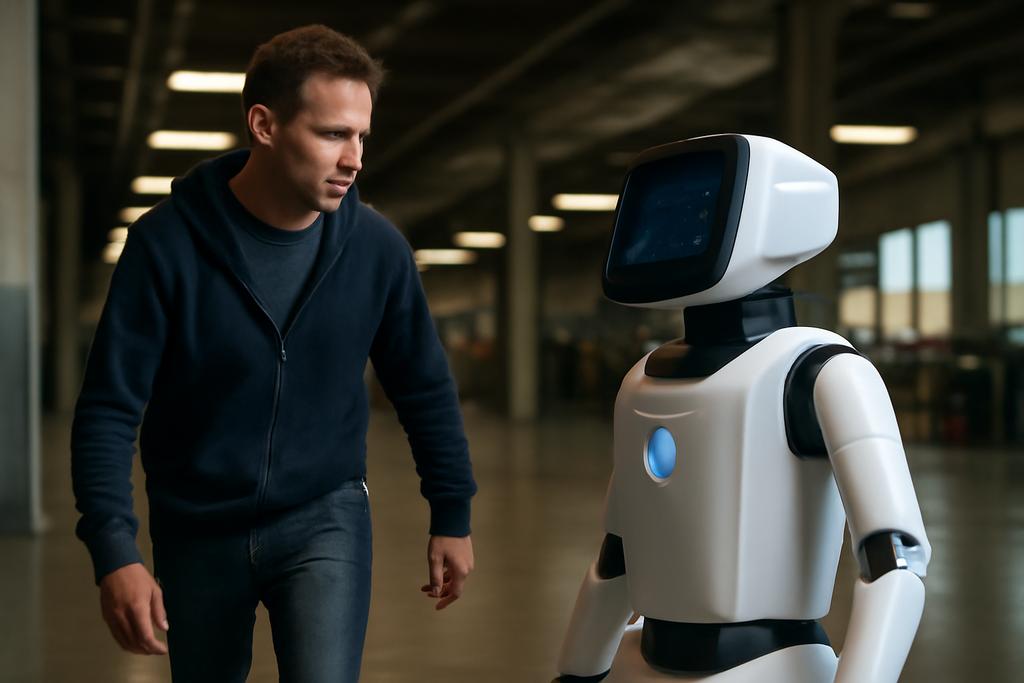Why Testing Robots Is More Than Just Pushing Buttons
Autonomous mobile robots (AMRs) are no longer sci-fi dreams—they’re real workers in warehouses, offices, and stores, quietly navigating aisles and corridors alongside humans. But here’s the catch: humans are unpredictable. They might suddenly stop, change direction, or do something the robot’s software never anticipated. This unpredictability poses a serious challenge for ensuring these robots operate safely and efficiently.
Testing these robots in the real world is expensive, slow, and potentially dangerous. Imagine a robot misjudging a human’s movement and causing a collision. So, how do engineers make sure these robots can handle the messy, chaotic reality of human environments without putting anyone at risk?
Enter Vision Language Models: Teaching Robots Through Stories and Pictures
A team of researchers from Simula Research Laboratory and the University of Oslo, in collaboration with PAL Robotics in Spain, have developed a clever solution. They use Vision Language Models (VLMs)—a type of AI that understands both images and text—to generate realistic, challenging scenarios for robots to navigate. Think of it as an AI storyteller that imagines all the ways humans might behave unpredictably around a robot, then tests if the robot can handle those situations.
Unlike traditional testing methods that rely on scripted or random human behaviors, VLMs bring commonsense reasoning to the table. They analyze images of the robot’s environment—like a warehouse map—and combine that with natural language descriptions of safety and functional requirements. Then, through a back-and-forth conversation with the AI, they generate detailed scenarios where humans might, say, block a robot’s path or move erratically, potentially causing the robot to fail its safety checks.
Simulating the Unexpected Without Real-World Risks
The researchers built a system called RVSG (Requirement-driven Vision-language Scenario Generation) that works in two stages. First, it processes images of the environment, labeling key areas and creating a grid map to understand where humans and robots can move. Then, it uses the VLM to generate human behaviors that deliberately violate the robot’s safety or functional requirements.
These scenarios are then run in a high-fidelity simulator using PAL Robotics’ TIAGo OMNI Base robot model. The simulation includes realistic human agents controlled by behavior models that mimic real human movements and social interactions. This setup allows the team to observe how the robot reacts to tricky human behaviors without any risk of injury or damage.
Why This Matters: Finding the Robot’s Blind Spots
The key insight from the study is that RVSG-generated scenarios are more effective at exposing the robot’s vulnerabilities than traditional random or unguided methods. The AI-crafted human behaviors increase the variability and instability in the robot’s responses, revealing unexpected or unsafe behaviors that might otherwise go unnoticed.
For example, the system can generate scenarios where a human suddenly crosses the robot’s path or lingers near obstacles, forcing the robot to adapt its navigation plan. By testing these edge cases in simulation, engineers can improve the robot’s software to handle real-world uncertainties better.
Not All Routes Are Created Equal
The researchers also found that the specific navigation routes the robot takes influence how well the test scenarios reveal problems. Routes that pass close to shelves or obstacles create more complex situations, increasing the chance of the robot exhibiting unstable behavior. This highlights the importance of considering the environment’s layout when designing tests.
From Warehouses to Wider Horizons
While this study focused on warehouse robots, the approach has broader implications. Using VLMs to generate realistic, requirement-driven test scenarios could revolutionize how we test all kinds of autonomous systems—from delivery drones to self-driving cars—especially when human interaction is involved.
Moreover, the researchers envision extending this method to test multiple requirements simultaneously and applying it to different robot platforms. The open-source nature of their work invites the robotics community to build on these advances, pushing the boundaries of safe and reliable autonomous machines.
Behind the Scenes: The RoboSAPIENS Project
This research is part of the RoboSAPIENS European project, which aims to create self-adaptive robots that can safely operate in uncertain and unknown environments. PAL Robotics, a leader in service robots, provided the industrial use case and robot platform for this study. The team’s work integrates cutting-edge AI models like GPT-4.1 with robotics simulation tools, blending language, vision, and motion into a powerful testing framework.
Final Thoughts
Testing autonomous robots isn’t just about making sure they don’t crash—it’s about preparing them for the unpredictable dance of human life. By harnessing AI’s ability to imagine and simulate complex human behaviors, researchers are giving robots a chance to learn from the unexpected before they ever hit the real world. It’s a glimpse into a future where humans and robots share spaces safely, thanks to AI’s storytelling prowess behind the scenes.










